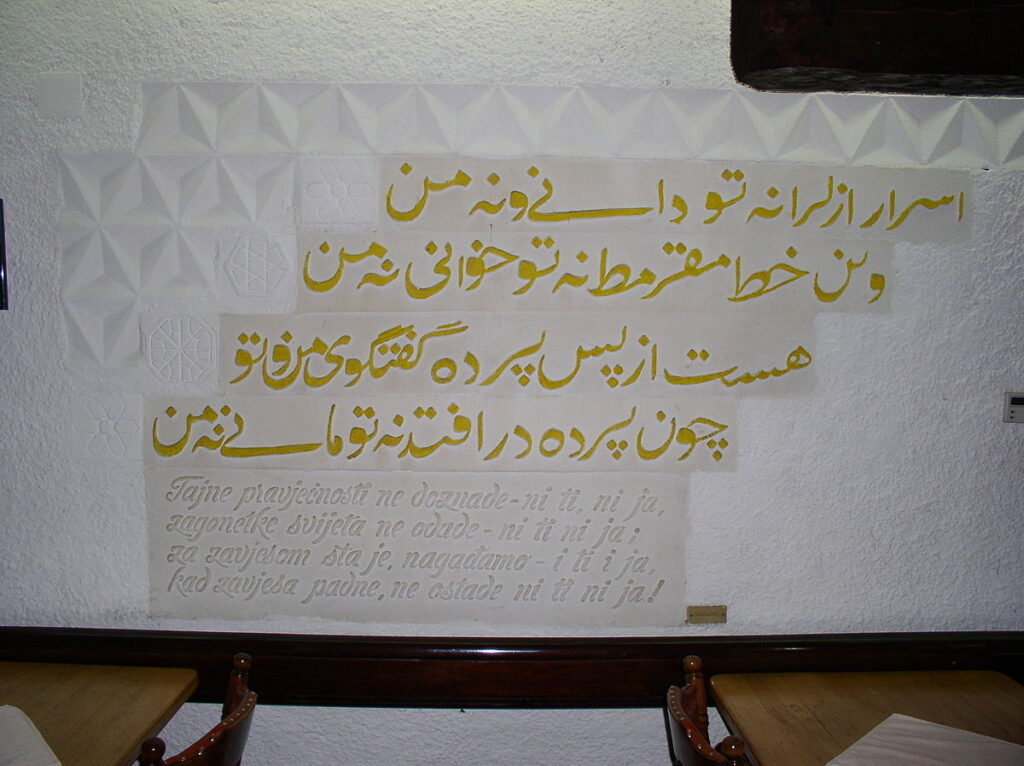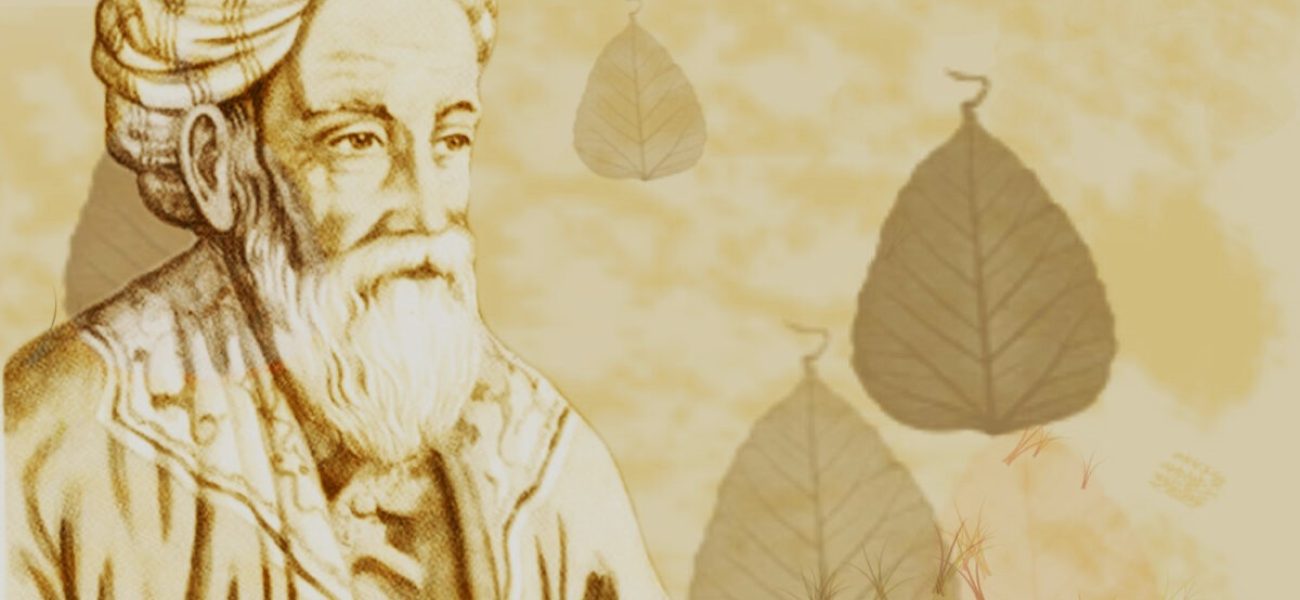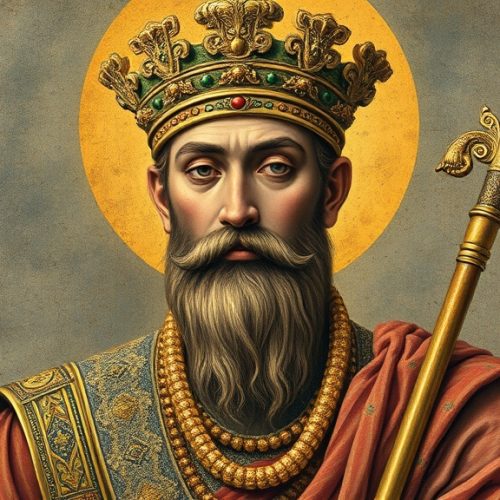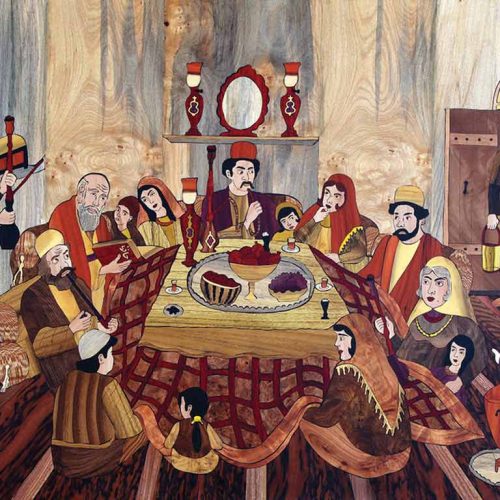Omar Khayyam, the celebrated polymath of medieval Persia, remains one of the most intriguing figures in history. Born in Nishapur, Iran, in 1048, Khayyam made significant contributions to mathematics, astronomy, poetry, philosophy, and religious thought during the Golden Age of Islamic civilization. In this scholarly article, we delve into the multifaceted life and works of Omar Khayyam, exploring his remarkable achievements across various fields of study.
Life of Omar Khayyam
Omar Khayyam’s life was as diverse and captivating as his contributions to various fields of study. Born in 1048 in Nishapur, a city known for its intellectual and cultural vibrancy, Khayyam grew up in an environment steeped in learning and scholarship. His family background, which included scholars and jurists, provided him with a solid foundation in education and a deep appreciation for knowledge.
From a young age, Khayyam displayed an extraordinary aptitude for learning, particularly in the fields of mathematics and astronomy. He showed a natural talent for solving complex mathematical problems and a keen interest in understanding the mysteries of the cosmos. Recognizing his exceptional abilities, Khayyam’s family ensured that he received the best education available, sending him to study under renowned scholars in Nishapur and later in Samarkand and Bukhara.

During his travels to Samarkand and Bukhara, Khayyam had the opportunity to study under some of the greatest minds of his time, including the renowned mathematician and astronomer Al-Khwarizmi. Under their guidance, Khayyam honed his mathematical skills and deepened his understanding of astronomy, laying the groundwork for his future contributions to these fields.
In addition to his scholarly pursuits, Khayyam also led a rich and multifaceted life. He served as a courtier and advisor to several rulers, including Sultan Malik-Shah I of the Seljuk Empire, and traveled extensively throughout the Islamic world, exchanging ideas and knowledge with fellow scholars and thinkers. His interactions with intellectuals from diverse backgrounds enriched his worldview and influenced his thinking on a wide range of subjects.
Despite his scholarly achievements and prestigious positions, Khayyam remained humble and unassuming, preferring the quiet contemplation of the natural world to the trappings of wealth and power. He was known for his modesty and humility, qualities that endeared him to his peers and earned him the respect and admiration of his contemporaries.
Throughout his life, Khayyam remained committed to the pursuit of knowledge and truth, seeking to unravel the mysteries of the universe and understand the fundamental principles that govern the natural world. His insatiable curiosity and relentless pursuit of excellence propelled him to new heights of intellectual achievement, leaving an indelible mark on the fields of mathematics, astronomy, poetry, and philosophy.
In the annals of history, Omar Khayyam’s life stands as a testament to the power of human intellect and the enduring quest for knowledge and understanding. His remarkable achievements continue to inspire and enlighten generations of scholars, scientists, poets, and philosophers, reminding us of the transformative potential of the human mind and the boundless possibilities that await those who dare to explore the unknown.
Mathematical Contributions

Omar Khayyam’s mathematical contributions were not only groundbreaking but also deeply influential, shaping the trajectory of mathematical thought for centuries to come. His work spanned a wide range of mathematical disciplines, from algebra and geometry to number theory and algebraic equations. Here, we delve into Khayyam’s significant mathematical achievements and their lasting impact on the field.
- Theory of Parallels: Khayyam’s exploration of parallel lines challenged the conventional understanding of geometry, particularly Euclid’s parallel postulate. While Euclid’s postulate states that only one parallel line can be drawn through a point not on a given line, Khayyam proposed alternative theories that allowed for the existence of multiple parallel lines through a single point. His insights into the nature of parallel lines laid the groundwork for later developments in non-Euclidean geometry, a field that would revolutionize our understanding of space and geometry.
- Real Number Concept: Khayyam’s work on algebraic equations and geometric algebra contributed significantly to the development of the concept of real numbers. He explored the properties of irrational numbers and their application to mathematical problems, advancing our understanding of the continuum of real numbers and their relationship to geometric figures and algebraic expressions.
- Geometric Algebra: In his studies of geometric algebra, Khayyam introduced innovative methods for representing and manipulating geometric shapes using algebraic techniques. He developed geometric proofs and constructions that paved the way for advancements in algebraic geometry, laying the foundation for future developments in the field.
- Solution of Cubic Equations: Khayyam’s most famous mathematical achievement is his elegant solution to cubic equations, a problem that had confounded mathematicians for centuries. His method of intersecting conic sections to solve cubic equations represented a significant breakthrough in algebraic techniques and provided a powerful tool for solving mathematical problems in various contexts.
- Binomial Theorem and Extraction of Roots: Khayyam’s contributions to the binomial theorem and the extraction of roots were instrumental in advancing algebraic techniques and mathematical calculations. He developed new methods for calculating higher-order roots and expanding binomial expressions, providing practical tools for solving complex mathematical problems.
Khayyam’s mathematical achievements were not only remarkable in their own right but also had a profound impact on the development of mathematics as a whole. His insights into geometry, algebra, and number theory laid the groundwork for future generations of mathematicians, inspiring new avenues of research and exploration in the centuries that followed. Today, Khayyam’s legacy continues to be celebrated and studied by mathematicians and scholars around the world, underscoring the enduring significance of his contributions to the field of mathematics.
Astronomical Achievements

Omar Khayyam’s astronomical achievements are as significant as his mathematical contributions, reflecting his profound understanding of the celestial mechanics and his dedication to the study of the stars. As an astronomer, Khayyam conducted detailed observations of celestial phenomena, developed precise astronomical instruments, and formulated accurate theories to explain the movements of the planets and stars. Here, we explore Khayyam’s notable achievements in the field of astronomy and their lasting impact on our understanding of the universe.
- Observational Astronomy: Khayyam’s astronomical observations were meticulous and comprehensive, covering a wide range of celestial phenomena, including the movements of the planets, the phases of the moon, and the positions of the stars. He meticulously recorded his observations using sophisticated instruments such as astrolabes and sextants, allowing him to measure the positions and distances of celestial objects with remarkable precision.
- Astronomical Tables and Calendars: One of Khayyam’s most enduring contributions to astronomy was his development of accurate astronomical tables and calendars. Drawing on his extensive observations and mathematical expertise, Khayyam formulated precise calculations for determining the positions of celestial bodies and predicting astronomical events such as eclipses and planetary conjunctions. His astronomical tables and calendars were widely used by astronomers and navigators for centuries, serving as indispensable tools for celestial navigation and timekeeping.
- Reform of the Persian Calendar: Khayyam played a key role in reforming the Persian calendar, known as the Jalali calendar, to make it more accurate and reliable. Working in collaboration with other scholars, Khayyam proposed adjustments to the existing calendar system based on solar observations and astronomical calculations. The resulting Jalali calendar, which was adopted in Iran and other parts of the Islamic world, provided a more precise method for determining the length of the year and the timing of religious festivals.
- Stellar Parallax and Astronomical Models: Khayyam’s astronomical observations and calculations led him to develop innovative models for understanding the motion of celestial bodies. He proposed theories to explain phenomena such as stellar parallax, the apparent shift in the position of stars due to the Earth’s orbit around the sun, and formulated mathematical equations to describe the motion of planets and stars in the night sky. His astronomical models laid the foundation for future advancements in celestial mechanics and astrophysics.
- Legacy and Influence: Khayyam’s contributions to astronomy had a profound impact on the development of the field, influencing generations of astronomers and navigators in the Islamic world and beyond. His precise observations, accurate calculations, and innovative theories helped to advance our understanding of the cosmos and paved the way for future discoveries in astronomy and space science. Today, Khayyam’s legacy continues to be celebrated and studied by astronomers and scholars around the world, underscoring his enduring influence on the study of the universe.
Omar Khayyam’s astronomical achievements are a testament to his brilliance as a scientist and his passion for unraveling the mysteries of the cosmos. His groundbreaking work in observational astronomy, calendar reform, and celestial mechanics laid the foundation for modern astronomy and inspired generations of astronomers to explore the wonders of the universe.
Poetry and Philosophy

Omar Khayyam’s poetry and philosophy are perhaps as renowned as his contributions to mathematics and astronomy. His poetic works, particularly his collection of quatrains known as the “Rubaiyat,” have captivated readers for centuries with their profound insights into the human condition, existential ponderings, and lyrical beauty. Khayyam’s philosophical musings, often intertwined with his poetry, reflect his contemplation of life’s mysteries, the nature of existence, and the quest for meaning in a transient world.
Poetry:
Khayyam’s poetry is characterized by its evocative imagery, emotional depth, and philosophical themes. His quatrains, consisting of four lines with a rhyme scheme of AABA, convey a wide range of emotions and ideas, from love and longing to mortality and the passage of time. Khayyam’s poetic style is marked by its simplicity and directness, yet beneath the surface lies a profound complexity and richness of thought.
In his poetry, Khayyam explores the fleeting nature of life and the inevitability of mortality, urging readers to seize the moment and savor the pleasures of the present. He celebrates the beauty of the natural world, from the blooming of flowers to the shimmering of stars, while also acknowledging the impermanence of all things. Khayyam’s verses are suffused with a sense of melancholy and resignation, yet they also contain hints of hope and resilience in the face of life’s uncertainties.
One of Khayyam’s most famous quatrains, “The Moving Finger,” captures the essence of his philosophical outlook:
“The Moving Finger writes; and, having writ, Moves on: nor all thy Piety nor Wit Shall lure it back to cancel half a Line, Nor all thy Tears wash out a Word of it.”
This quatrain reflects on the inexorable march of time and the futility of trying to alter fate. It speaks to the human condition, reminding us of our limited control over our destinies and the need to accept life’s inevitable changes with equanimity.
Philosophy:
Khayyam’s philosophical views are intricately woven into his poetry, reflecting his contemplation of metaphysical questions and existential dilemmas. While Khayyam’s poetry is often associated with themes of hedonism and skepticism, his philosophical outlook is more nuanced and complex.
At the heart of Khayyam’s philosophy is a deep skepticism towards religious dogma and orthodox beliefs. He questions the notion of divine predestination and the afterlife, advocating instead for a focus on the here and now. Khayyam encourages readers to embrace the pleasures of the present moment and live life to the fullest, rather than obsessing over the uncertainties of the future or the mysteries of the afterlife.
Khayyam’s philosophy is also informed by his scientific worldview and his belief in the power of reason and observation. He rejects blind faith and superstition in favor of rational inquiry and empirical evidence, urging readers to seek knowledge and understanding through critical thinking and observation of the natural world.
In his philosophical writings, Khayyam grapples with the fundamental questions of existence, the nature of reality, and the meaning of life. While he may not offer definitive answers to these profound questions, Khayyam’s poetry and philosophy invite readers to contemplate life’s mysteries and embrace the beauty and complexity of the human experience.
Omar Khayyam’s poetry and philosophy are inseparable from his identity as a thinker and a writer. His poetic verses, with their timeless wisdom and lyrical beauty, continue to inspire and resonate with readers around the world, while his philosophical musings challenge us to ponder the deepest questions of existence and the human condition.
Religious Views

Omar Khayyam’s religious views have been a subject of scholarly debate and interpretation for centuries, reflecting the complexity of his intellectual and spiritual outlook. Born into a predominantly Muslim society in medieval Persia, Khayyam was undoubtedly influenced by the cultural and religious milieu of his time. However, his writings and poetry suggest a nuanced approach to matters of faith and belief, characterized by a blend of skepticism, mysticism, and philosophical inquiry.
While Khayyam’s poetry contains references to Islamic themes, such as the concepts of fate, destiny, and the divine, it also reflects a certain ambivalence towards organized religion and traditional religious doctrines. In many of his quatrains, Khayyam questions the authority of religious institutions and challenges conventional notions of piety and righteousness. He expresses skepticism towards religious rituals and practices, advocating instead for a more personal and introspective approach to spirituality.
At the same time, Khayyam’s poetry is imbued with a deep sense of awe and wonder towards the natural world, which he often describes in terms of divine beauty and harmony. His verses celebrate the majesty of creation, from the vastness of the cosmos to the intricacies of the natural world, suggesting a reverence for the transcendent and the ineffable.
Khayyam’s religious views are also influenced by his engagement with Sufi mysticism, a mystical tradition within Islam that emphasizes the direct experience of the divine and the pursuit of spiritual enlightenment. While Khayyam was not a Sufi himself, his poetry exhibits themes and motifs commonly associated with Sufi thought, such as the quest for inner truth, the longing for union with the divine, and the celebration of love as a spiritual path.
Overall, Khayyam’s religious views can be seen as multifaceted and evolving, reflecting the complexity of his intellectual and spiritual journey. While he may have questioned certain aspects of orthodox religious belief, he also exhibited a deep reverence for the mysteries of existence and a profound sense of wonder towards the divine. His poetry invites readers to contemplate the profound questions of existence and the nature of reality, urging them to seek meaning and purpose in the midst of life’s uncertainties.
The Moving Finger Quatrain and Popular Culture References
The Moving Finger quatrain is perhaps one of Omar Khayyam’s most famous and widely quoted verses, resonating across cultures and generations with its timeless wisdom and profound insight into the human condition. This quatrain, originally penned in Persian and later translated into numerous languages, has left an indelible mark on literature, music, film, and popular culture.
The quatrain reads:
“The Moving Finger writes; and, having writ, Moves on: nor all thy Piety nor Wit Shall lure it back to cancel half a Line, Nor all thy Tears wash out a Word of it.”
This succinct yet profound verse encapsulates the inevitability of fate and the futility of trying to alter the course of destiny. The imagery of the “Moving Finger” evokes a sense of inevitability and inexorability, suggesting that once events are set in motion, they cannot be undone or reversed. The quatrain speaks to the human condition, reminding us of our limited control over our destinies and the transient nature of life itself.
The Moving Finger quatrain has been referenced and adapted in various forms of art and literature, serving as a source of inspiration for writers, poets, and artists around the world. In literature, the verse has been quoted and alluded to in countless novels, short stories, and essays, often serving as a poignant commentary on the passage of time and the impermanence of human endeavors.
In music, the Moving Finger quatrain has been incorporated into song lyrics and compositions, adding depth and meaning to musical works across genres. Musicians and composers have drawn upon the verse’s themes of fate, mortality, and the inevitability of change to create evocative and thought-provoking pieces that resonate with audiences.
In film and television, references to the Moving Finger quatrain can be found in dialogue, narration, and visual imagery, enriching storytelling and adding layers of meaning to cinematic narratives. Filmmakers and screenwriters have utilized the verse’s themes of fate and destiny to explore existential themes and provoke introspection in audiences.
Beyond literature, music, and film, the Moving Finger quatrain has also found its way into everyday discourse, with people quoting and referencing the verse in conversation, social media posts, and other forms of communication. Its enduring popularity speaks to the universality of its message and its ability to resonate with people from all walks of life.
In conclusion, the Moving Finger quatrain stands as a testament to Omar Khayyam’s literary genius and philosophical insight. Its profound themes of fate, mortality, and the passage of time continue to captivate audiences and inspire creative expression in various forms of art and popular culture, reaffirming its status as one of the most enduring and impactful verses in literary history.Top of Form
Omar Khayyam’s legacy as a mathematician, astronomer, poet, and philosopher is a testament to the breadth and depth of his intellectual and creative contributions. His pioneering work in mathematics and astronomy laid the foundation for future advancements in science and technology, while his poetry and philosophy continue to inspire and provoke thought in readers around the world. As we celebrate the life and works of Omar Khayyam, we are reminded of the enduring power of human intellect and creativity to illuminate the mysteries of the universe and enrich the human experience.




